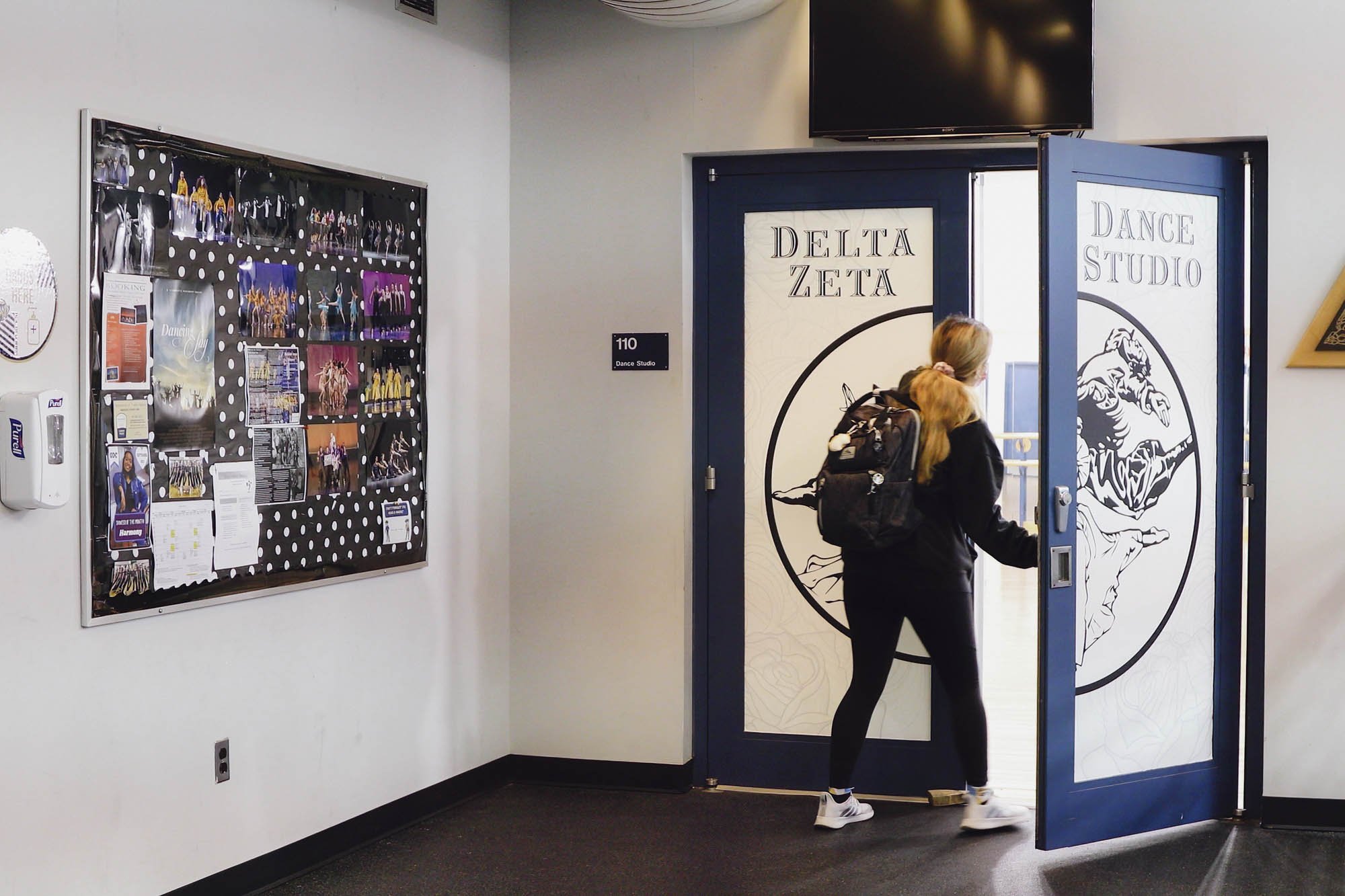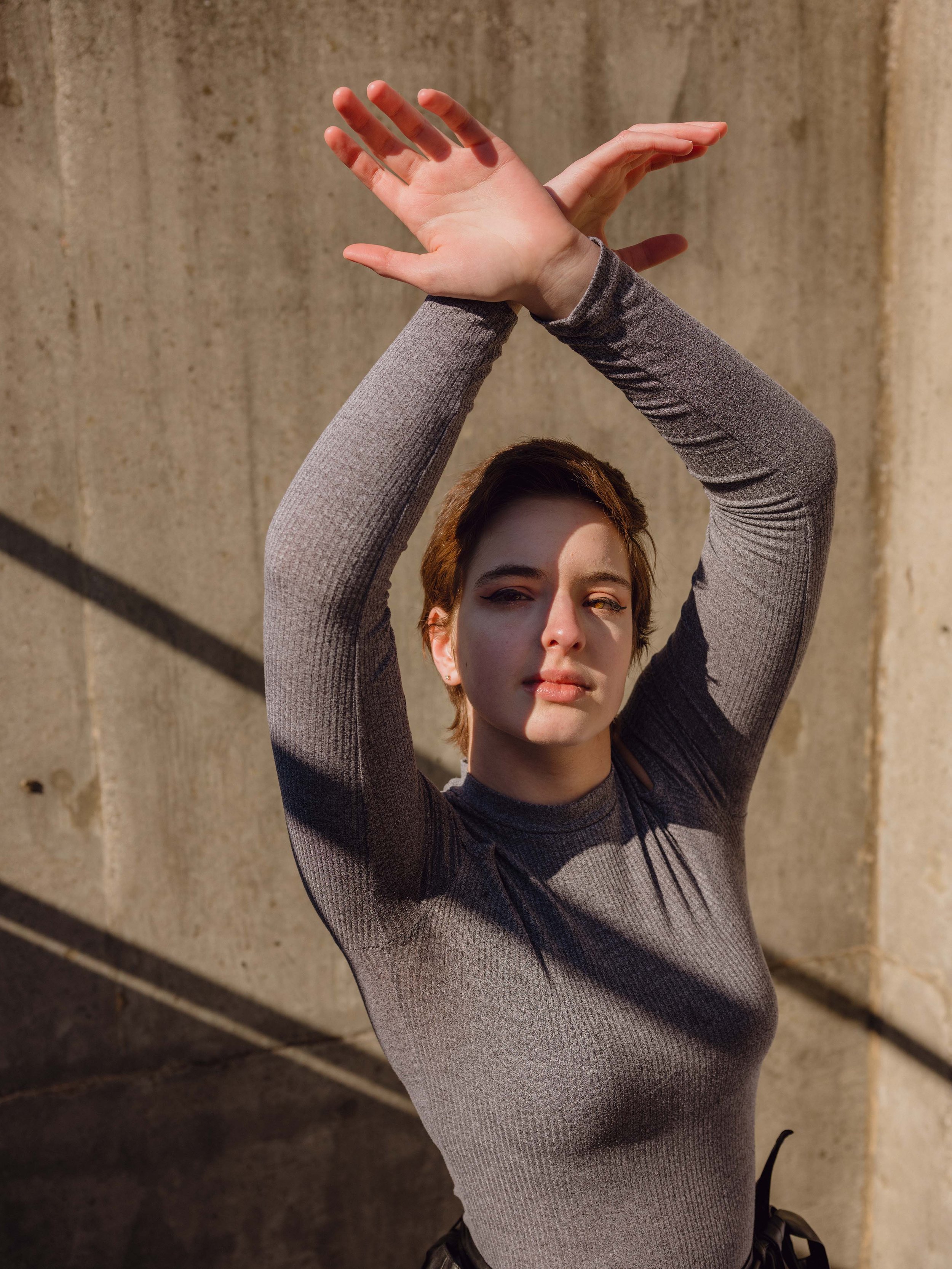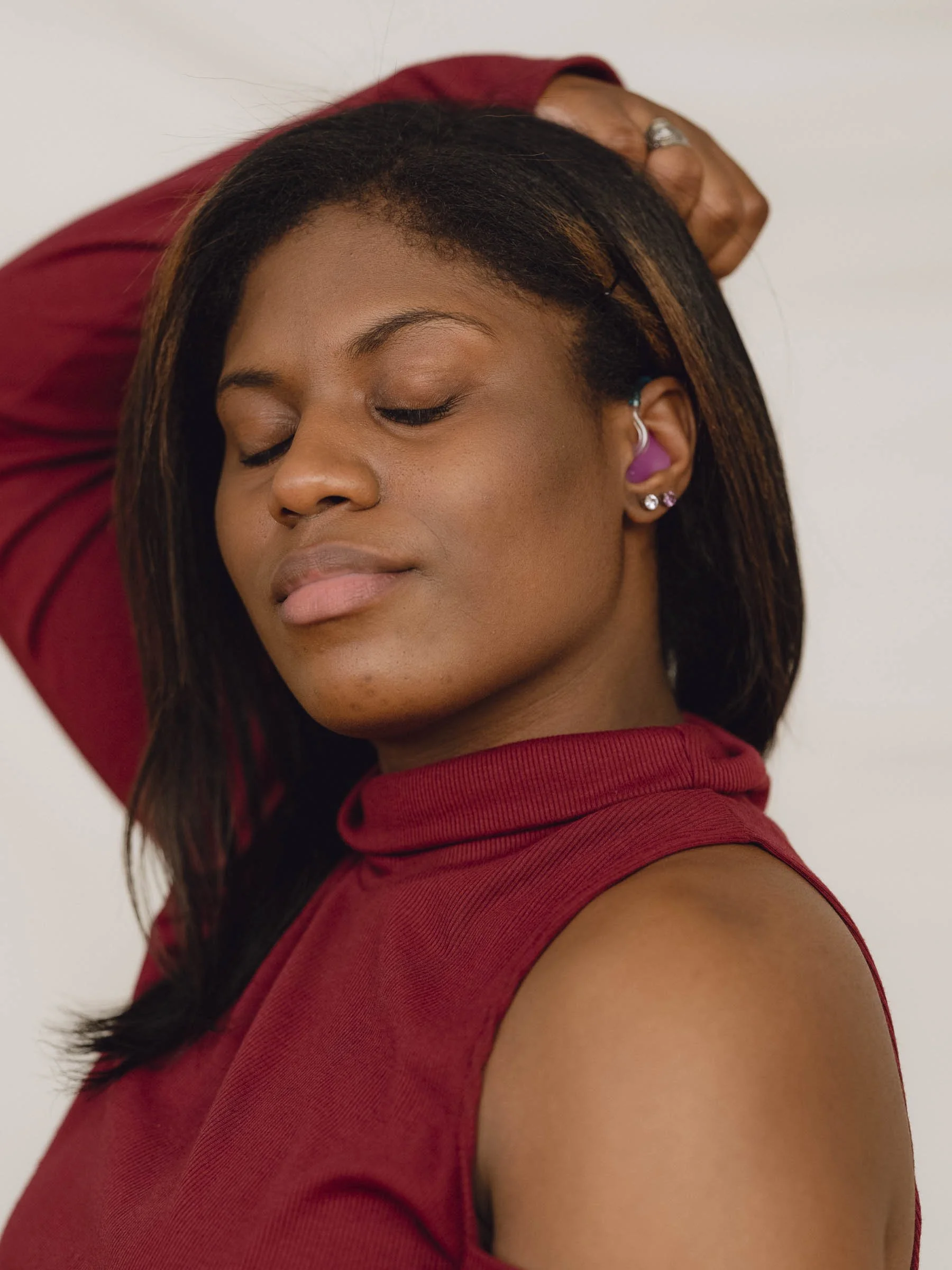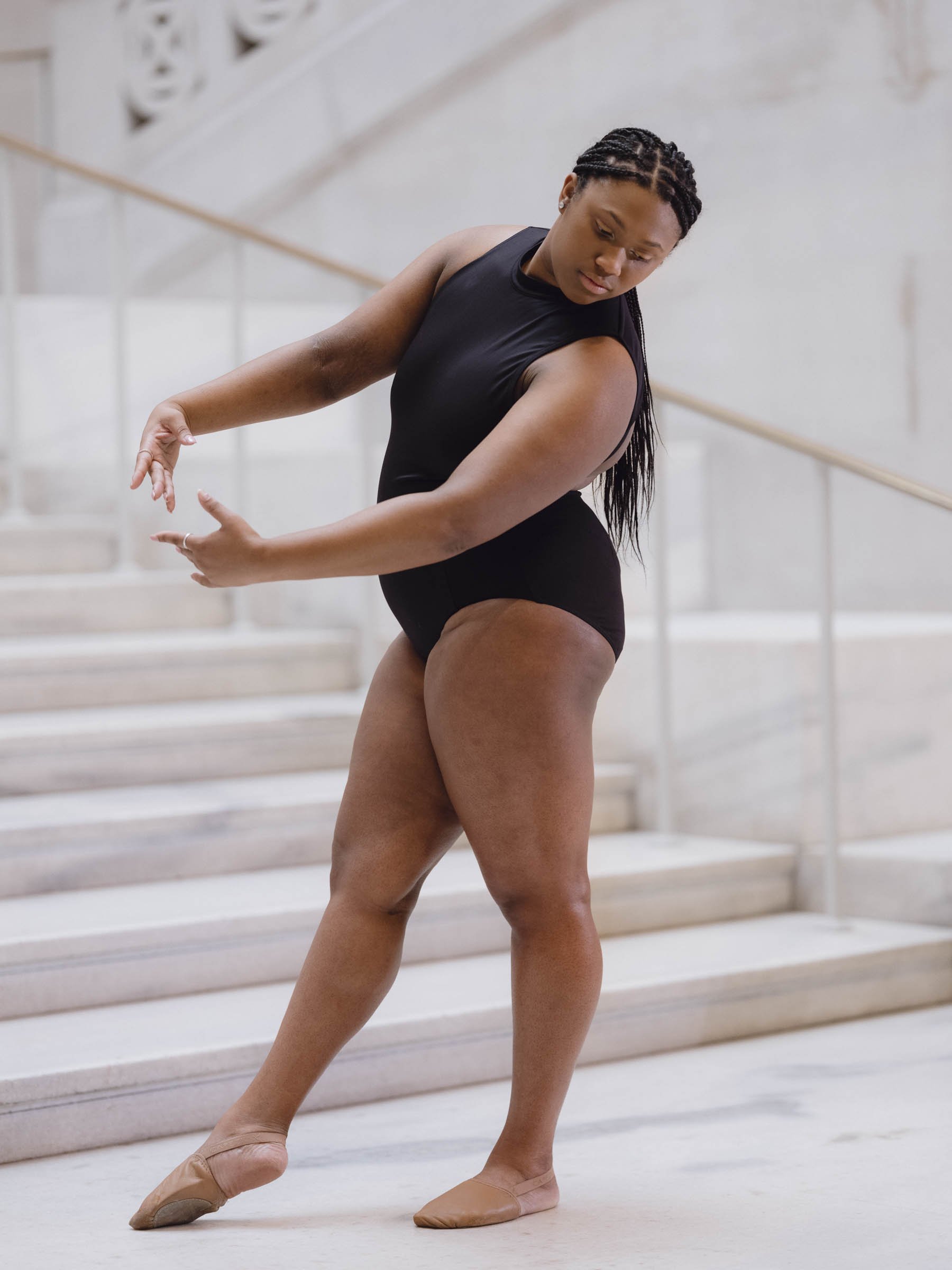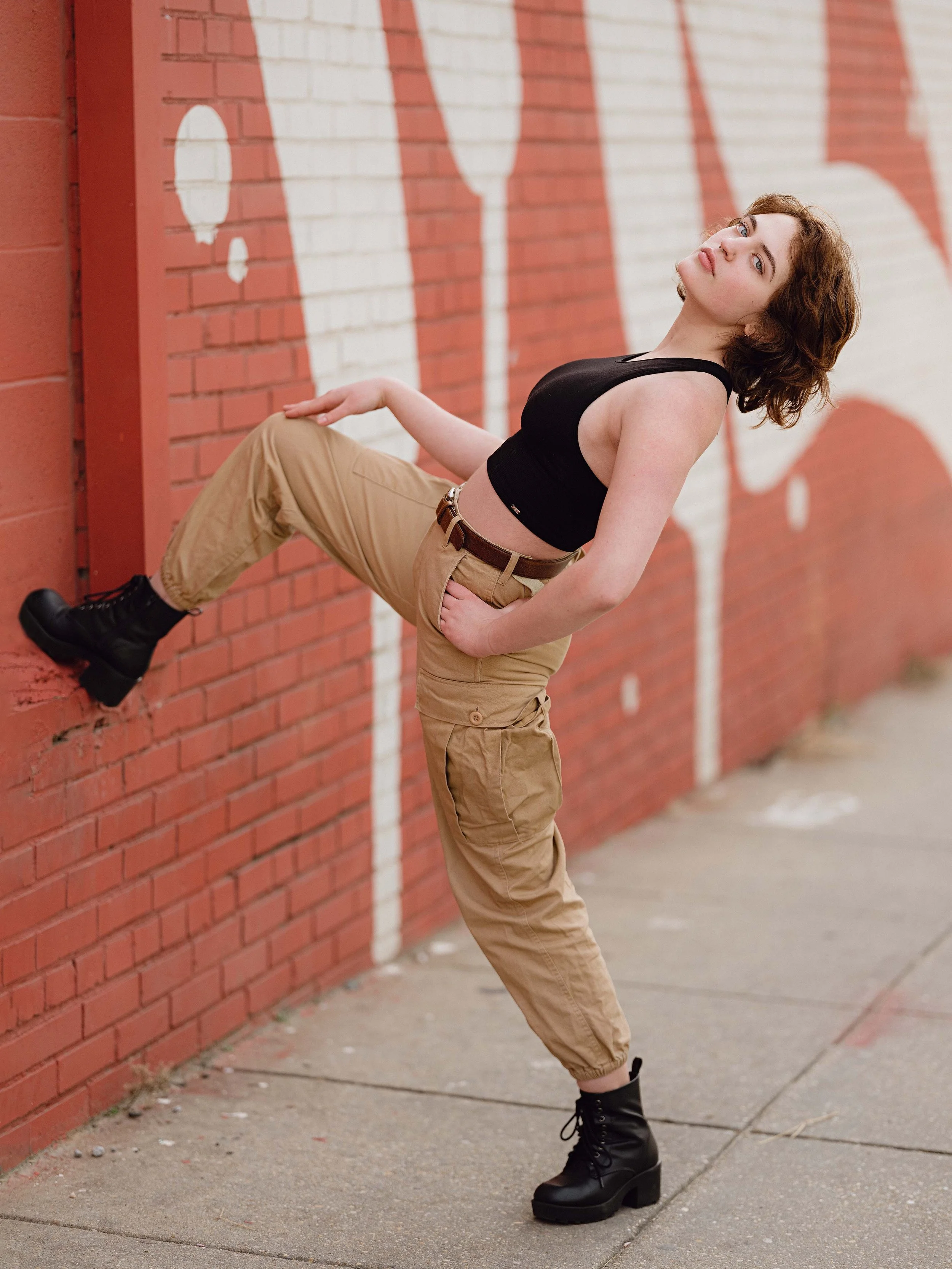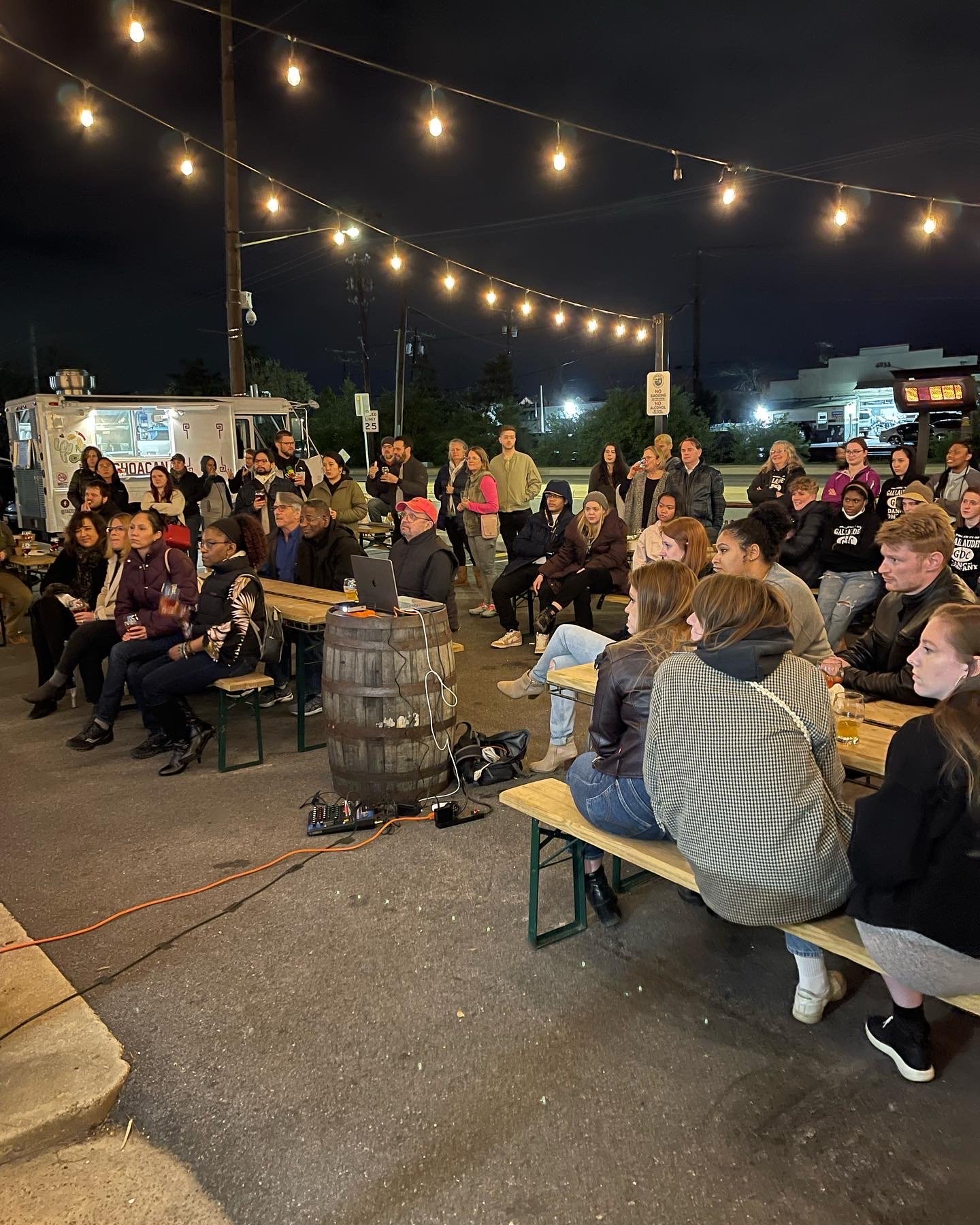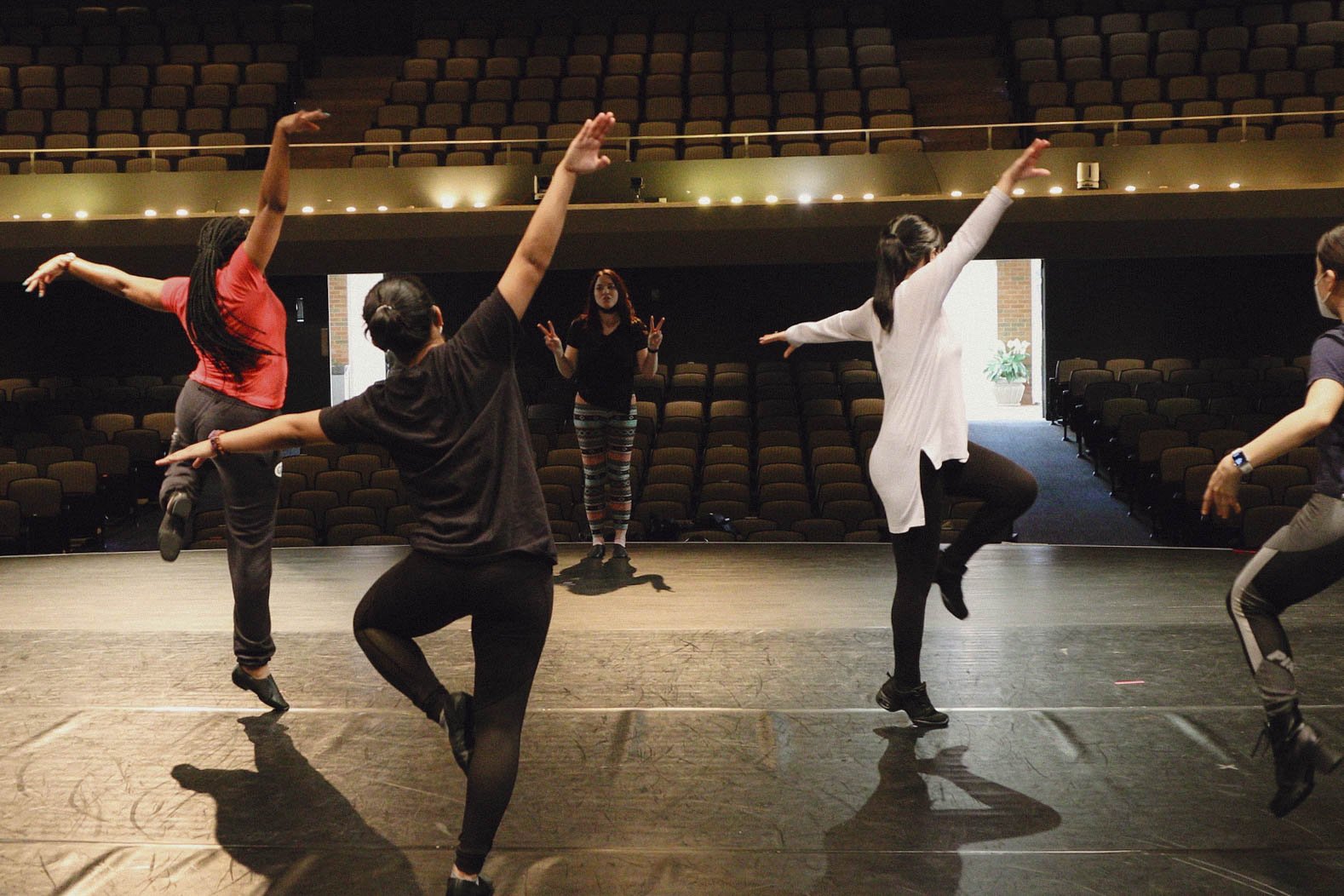This award winning short documentary follows the journey of graduating seniors, and retiring dance director, of the Gallaudet Dance Company as they prepare for their last spring concert and life after Gallaudet.
Every member of the dance company is Deaf or hard of hearing, meaning that dance is pushed beyond the scope of sound. This short documentary explores the nuances of the Deaf community and Deaf culture to highlight the challenges and frustrations with accessibility in and outside of the dance studio. The Gallaudet Dance Company creates a space where they can be free from expectations and do what they love: dance.
Music by Zoë Keating
This short documentary explores the relationship dancers have with music, especially when none of the dancers can hear the music. The Gallaudet Dance Company is home to a small dance studio that pushes the meaning of dance beyond the scope of sound, as dancers use their bodies and the floor to communicate with one another. This year marked a specific turning point for the program, as half the dancers are graduating, their dance company director Sue Gill-Doleac is also retiring after 44 years.
Family, community, and deaf culture are the major themes that are explored as the dancers and their director prepare for their last spring concert and life after Gallaudet.
Now streaming Silent Rhythm through WildSound Festival TV
Gallaudet Dance Co. Portraits
I wanted to photograph each of the dancers focusing on their unique personalities and preferred dance style. Deaf dancers are no different than hearing dancers, the drive and passion for dance is all there. It’s only the accessibility that’s different.

Film Screening Premiere
I had the opportunity to share my short documentary film with the community here in D.C. and Maryland. I invited all of the dancers from the Gallaudet Dance Company who were featured in both my portraits and in the short film, and members of the deaf and hard of hearing community in D.C. to come see and chat with me about my work. I was able to give a short introduction before the screening and hosted a small Q&A after the film to answer questions about my filmmaking process and why I chose this project. It was great to get to see everyone who came out, and I had a lot of fun talking about my project and answering questions, in addition to supporting a local deaf owned business!
Saturday April 9, 2022
Short Q&A post film screening
Question: So why this project? Why the Gallaudet Dance Company?
“There are two parts to that question for me. The first part of tackling a project like this, was how was I going to engage the larger community about Deaf people? I thought about how I could immediately grab someone’s attention; and I thought of deaf dancers. So many people will want to know how they do it, how Deaf dancers dance to music they can’t hear, and that could be my hook— and then teach about deaf culture and deaf community. So as the audience becomes more invested in learning more about how the dancers dance to the music, they end up learning more about deaf culture and community.”
GALLERY SHOW
CORCORAN SCHOOL OF THE ARTS & DESIGN - NEXT ‘22 EXHIBITION
APRIL 28 - MAY 14 - 2022
44 Years
Sue Gill-Doleac’s Last Year as Gallaudet Dance Company Director
April 20, 2022
Written and photographed by Sarah Goolishian
The wooden floorboards of the small dance studio vibrated as each of the four speakers lining the wall blasted bass heavy music. Sitting in a fold out chair in the corner of the room, is an older woman with greying blonde hair wearing a lanyard of various keys. One of those keys fits to a small blue door decorated with dance stickers. How many times this door has been opened and closed is beyond counting, but with certainty this door will close- one last time for its director Sue Gill Doleac this summer after 44 years.
“I’m retiring this summer and I’m looking forward to it, I’m ready to hand it over to the new dance director.” Doleac said when talking about the closing of her chapter working here at Gallaudet. Her blue eyes were already a little sad behind her clear frames. Her hands as she spoke through American Sign Language matched her smooth rhythmic cadence, the body kinetics only dancers have. In 2011 when the previous dance company director, Diane Hottendorf, retired, Doleac became the first deaf dance director at Gallaudet.
“The reason why I went to Gallaudet, is because of the Gallaudet Dance Company. I joined the Company when I was eighteen years old as a freshmen, in 1978.” Doleac said as she remembered through counting on her fingers adding small notes to each year with her other hand.
Sue Gill-Doleac standing in The Gallaudet Dance Company studio, the same one she danced in as a freshmen in 1978.
There are fourteen dancers in the dance company this year, a good percentage of them are freshmen and sophomores with only a handful of juniors and seniors. All of them are deaf or hard of hearing which means the dance studio and the dancers themselves have adapted to make the dance studio deaf accessible. There are six different speakers lining one of the walls, with four of them on the wooden floor. Every now and then there’s an occasional slap on the floor, a series of foot stomps, a point or wave, a shoulder touch from another dancer, or an instructor standing in front counting on one hand in various hand shapes – 5, 6, 7, 8.
The Gallaudet Dance Company was founded by Dr. Peter Wisher in 1955. a student signing "The Lord's Prayer" during a campus ceremony. Impressed by the beauty and movement of the signs, he saw the possibility of using signs as a foundation for dance movement. After Dr. Wisher, Diane Hottendorf became the company’s Director and mentor to Doleac in 1975. From there, Doleac became an assistant director as a graduate student at Gallaudet and then Director. During that time the Gallaudet Dance Company (GDC) has been able to perform for the White House, some of Europe, the Caribbean, some of South America and even South Korea. The dance company was also able to be featured in a recent international film “Dancing Joy” in 2020.
“Of special significance was the inclusion of the deaf and hard of hearing culture, said, Tsubata the director of "Dancing Joy”, “We wanted to honor Beethoven’s own battle with hearing loss, so the first group we approached was the Gallaudet Dance Company, who originated ASL Dance, and who play a key role in the film, including the sign-language-based dance moves to interpret the choral lyrics.”
Gallaudet University is unique in the fact that everything about campus is completely designed to fit the needs of a completely deaf environment and culture. This means classrooms and offices have large glass windows to allow students and staff to communicate from the hallway. All courses are taught in American Sign Language (ASL) with the help of interpreters for students who are still learning ASL. The football team uses flags and visual signs instead of a whistle, and all tables in the cafeteria are round to allow deaf students to sit together and eat and chat where they can all see each other. The birds in the morning, the occasional bell chime from the clock tower at the hour, and student laughter are the only sounds on campus.
“Yeah, the first semester I was here, I was going through a language and culture shock. It was hard the first semester. I grew up in a hearing world, so coming to Gallaudet was a whole new experience for me, but when I joined the dance company, and I met people like myself I felt a sense of belonging. The dancers became my family. When I found myself at Gallaudet, I just felt free,” Doleac said. Her wise eyes crinkled as her smile spread across her face with her hand resting on her chest.
Sue grew up in West Trenton, N.J., where the only other deaf member of her family was one of her older brothers; the other bother and her parents are non-deaf. At home she communicated with her family through American sign language, which meant attending public schools growing up she struggled to have the same level of language access.
“There were no [deaf] programs back then, I was the only deaf student in my public school. There were no interpreters, there were no notetakers, nothing. It was tough, I had to sit in the front of the class and try to lip read the teachers. All the information I missed during the day my parents helped me re-learn everything- every night they helped me with my homework.” Her shoulders slumped slightly hinting at the emotional weight of all those years full of frustration and exhaustion in mainstream school programs.
When asked about the dance technique itself, Sue immediately started to rattle out all of the interesting ways deaf and hard of hearing dancers actually listen with every other part of their body. “With a lot of experience, I’ve learned the best way to teach deaf dancers is to count visually. It’s so important to show the count of every step- every movement. It helps dancers memorize the dance steps, it helps them stay in time with the music, so they know how fast or how slow to move” Doleac explained. She went on to describe how dance instructors use different types of cues—foot stomping to count out a rhythm, tapping a dancer’s shoulder, a nod, a slap on the floor—to cue a dancer when music stops, starts or changes. In order to synchronize together, they’ll often choose one dancer in the front to follow. Deaf dancers rely heavily on their eyes to keep in time with the music and to communicate with each other.
Doleac later told a story about one of their performances of campus when a technical glitch caused the music to stop. The dancers unfazed and unbothered, kept dancing without missing a step, they finished the dance on time when the music was suddenly restored in the last few seconds of the song. Doleac added, “And I always say, make sure you’re on time with the music. We don’t want to be known as the deaf dancers who are one or two counts behind.”
Doleac believes that a deaf dance company should not only be able to dance in time with the music but should also incorporate ASL into the dance routine itself. “I ask the choreographers to add signing to the choreography, because I think it’s so important for the audience to see signing with dance. I can’t hear the words to the song, but if they sign it, I appreciate it more and I think the deaf audience does too,” Doleac said.
To no one’s surprise this year’s spring show in March will be one of the hardest for Doleac. She confessed that she feels she’s a mom, an aunt or even a big sister to the girls and women in the dance studio. “Sometimes I’m so close to [the dancers], it’s hard for me to let go.
For four years I see them every day and then they graduate and leave. It’s hard on me. Every graduation I cry, and I have to remind myself to let them spread their wings and fly. This year’s show is going to have a huge impact on me, and I know I will cry.” She laughed a bit as she wiped away tears already starting to run down her face.
Its clear to anyone walking into the dance studio how much Doleac is loved and respected. Each afternoon right at four o’clock a wave of diverse female college students congregate around line of chairs towards the back wall. Sue already there waiting to greet each of them, ready to ask about their day or to ask about classes. After four years, the seniors become especially close with Sue and incredibly close with the other dancers.
Sue Gill-Doleac signing, “I love you” from the crowd to the dancers on stage after their spring concert March 26, 2022.
“Part of becoming a good dance company, starts with building a sense of connection with each other. The dance company really starts to feel like a family,” Lexine Brooks a graduating senior in the dance company said. Brooks, like several others in the dance company, shared that the dance company was a pivotal place for them in building self-confidence and their own deaf identities. “Sue is such a friendly, wonderful person and incredible at managing and coordinating everything for us- costumes, scheduling, transportation. We will all really miss her this spring,” Brooks added.
Sue Gill-Doleac taking her last bow on stage after 44 years as dance company director.
Doleac when thinking about plans once she retires, shared that she’s looking forward to having more time to enjoy the beach and water activities near her house in Annapolis, M.D. She also wants to be able to travel and spend time in her other house in North Carolina. “I’m actually really looking forward to taking dance classes for myself. I’ve been teaching for so long- I want to be able to trade places and become a student again” Doleac said.
Until then, Doleac will continue to sit in her usual spot by her office door watching and sometimes by coincidence nodding her head in time with the music. Her office key always at her side as a small quiet reminder of her upcoming retirement this May and to a new chapter away from what has been her second home for 40 years.





